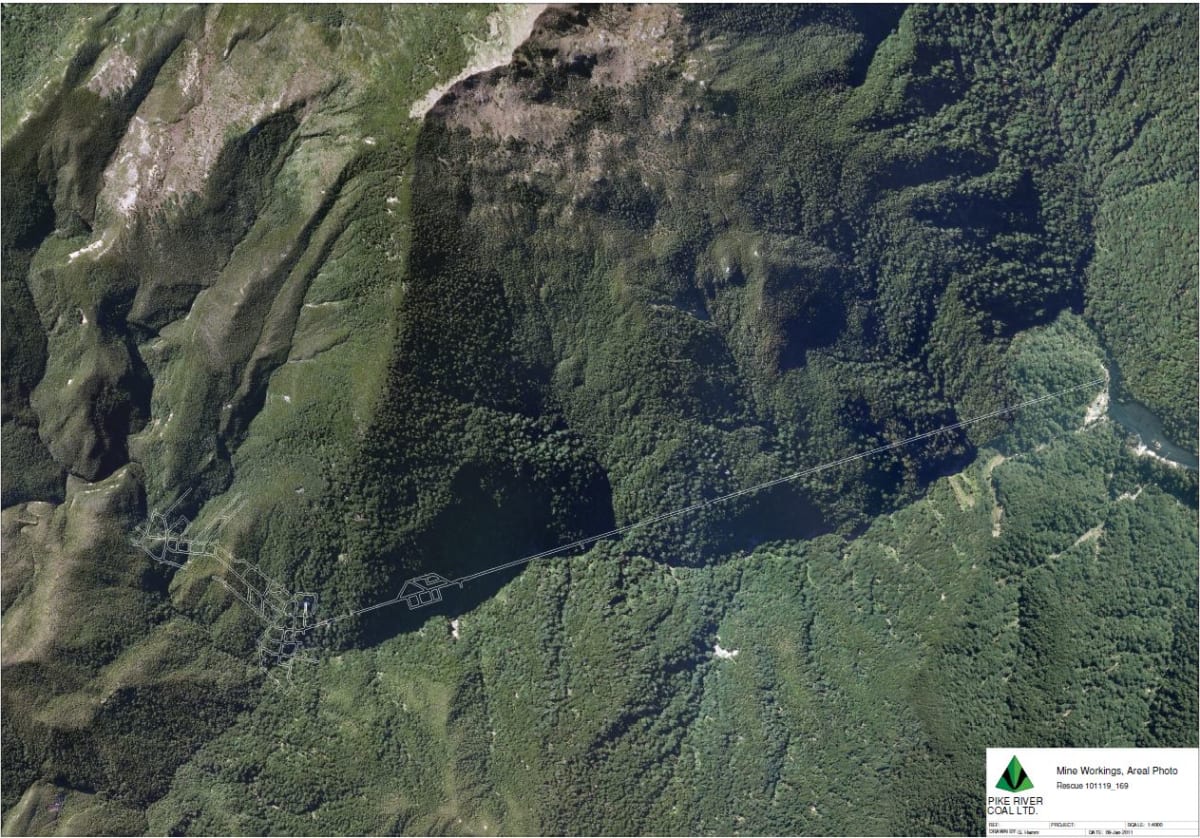
The new borehole programme and special cameras could answer two major questions for families of the 29 victims, writes Rebecca Macfie
Police investigating the Pike River mine disaster will sink 10 new boreholes into the mine from the top of the Paparoa mountains.
The planned new borehole programme marks a significant further development in the long-running criminal investigation into the cause of the mine explosion almost 12 years ago, and will push the police inquiry well into next year.
Detective inspector Peter Read says the new holes will enable further high-resolution camera imaging into key areas of the mine, to enable experts to arrive at “definitive” conclusions as to where the blast originated, the volume of fuel (methane) consumed, and the direction and reach of explosive forces.
He says this new phase of the investigation is “imperative” and will fill gaps in the inquiry team’s knowledge of what happened underground in the lead up to the first explosion at 3.45pm on November 19, 2010.
Read has refused to say whether criminal charges will be laid in relation to the explosion that killed 29 workers, but said yesterday that the inquiry needed to eliminate doubt and uncertainty so that witnesses could answer cross-examination questions “if we do get to a prosecution”.
Earlier this year the police finished what was then thought to be the complete borehole programme, which involved eight holes of around 100 metres deep. These enabled high resolution camera imaging of the scene underground in different areas of the mine, illuminated by extremely powerful lighting.
In the process of that work several bodies were located – but have not been identified – and Read says there will likely be more bodies seen via the proposed new boreholes.
He emphasises that the purpose of the ongoing investigation is to gather evidence, not find bodies. However, two of the proposed sites for new boreholes may finally settle two key questions that have plagued some family members of the 29 dead.
One of the new holes will penetrate directly into the area of the mine’s main underground fan – an unconventional and highly problematic piece of mine infrastructure – which some family members believe was a likely cause of the explosion. Read says the police experts don’t think it is, but closer inspection of the scene should provide definitive answers.
Another of the new holes will look at the “inbye” (towards the interior of the mine) side of the rockfall where the 2.3 km stone drift reaches the mine itself. This was the point at which the Pike River Recovery Agency’s drift recovery and examination ended. Families have long considered the possibility that there may be bodies of men there who would have been knocking off their shift at around the time of the explosion. Although the purpose of this proposed new borehole is not to satisfy this question for families, Read says imaging of the area will hopefully put the matter to rest for them, in addition to providing further evidence on the explosion.

Other borehole locations have not yet been released, but an area Read identified for further examination is the north-western region of the small mine, near where a continuous miner and an alpine bolter miner were being operated by workers.
The decision to proceed with the new holes was reached after the police investigators met with experts in August to to review in detail all of the information retrieved to date.
“They were able to tell us a huge amount about what had gone on there, but there were parts of it they said ‘we can’t be sure, we are assuming it could have gone this way or it could have done this’,” said Read. The only way to fill those remaining evidential gaps was through the further boreholes, each of which has been justified by the experts in terms of the information needed to reach a firm conclusion as to what led to the first explosion.
The Christchurch crown prosecutor has been kept appraised of the police investigation, but Crown Law has not yet been asked for an opinion regarding whether to proceed with a prosecution, Read said yesterday.
He wouldn’t reveal the cost of the new boreholes because negotiations with contractors were still going on. However the cost of six earlier boreholes was put at $3 million [[https://www.stuff.co.nz/national/127024903/human-remains-destruction-seen-on-crystal-clear-images-from-pike-river-boreholes]].
No-one has been held to account for the avoidable Pike River mine disaster 12 years ago. There had been consistent and repeated failures to manage the mine’s key risk – methane gas – in the weeks prior to the explosion, and workers were under pressure to get the project into full coal production. At the time of the explosion the mine was still in development and had shipped only 42,000 tonnes of coal – a small fraction of the one million tonnes a year that the company had promised its shareholders.
ends.







